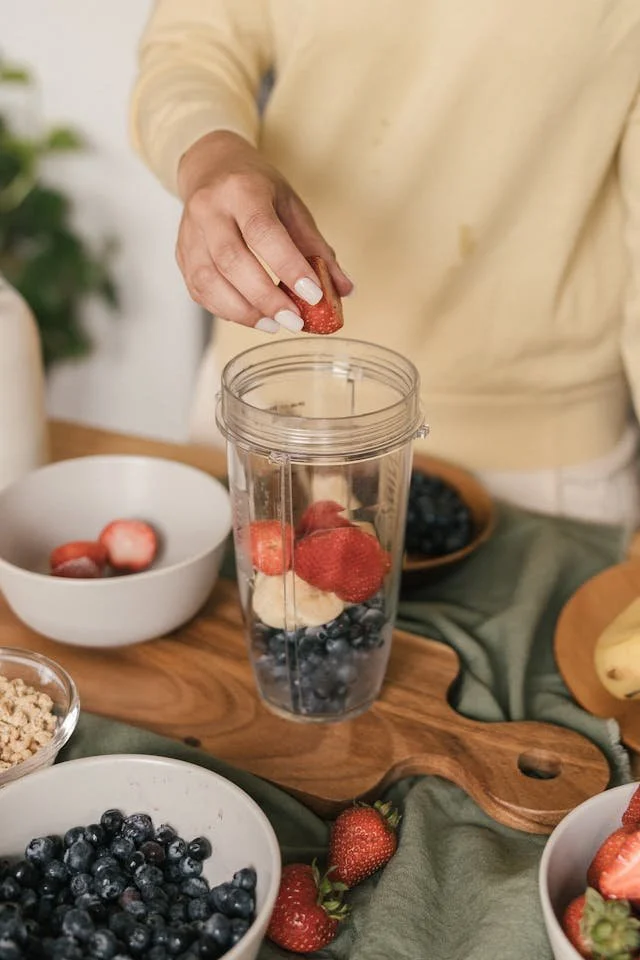Better-for-You Foods: 2025 Mid-Year Trend Report
Executive Summary
The first half of 2025 has marked a decisive shift in the better-for-you food landscape, driven by consumer demands for transparency, functionality, and genuine health benefits. With the global functional foods market projected to reach $452.5 billion by 2029, we’re witnessing unprecedented innovation in products that deliver targeted wellness outcomes while maintaining taste and convenience.
Major Trends Dominating H1 2025
1. The Ultra-Processed Exodus
The most significant trend of 2025 has been consumers’ deliberate rejection of ultra-processed foods (UPFs). Early 2025 data shows a marked shift as consumers actively read labels and seek whole food alternatives. This movement, ignited by mounting scientific evidence linking UPFs to metabolic disorders and inflammatory conditions, is reshaping entire product categories. Traditional snack giants are scrambling to reformulate, while upstart brands focusing on minimal processing are capturing significant market share.
2. Multifunction Protein Revolution
Protein products have evolved beyond simple muscle building. The standout trend is multifunction formulas that target both gut health and muscle development simultaneously. Sales of high-protein products (20+ grams per serving) topped $4.9 billion, up 9.3% year-over-year. Companies like Honey Stinger and emerging players are combining traditional protein with probiotics, adaptogens, and micronutrients to create comprehensive wellness solutions.
3. Mindful Indulgence
Moving away from the restrictive “clean eating” mentality, 2025 has embraced “mindful indulgence” – better-for-you versions of comfort foods that don’t compromise on taste. This trend reflects consumer fatigue with deprivation-based diets and a desire for sustainable, enjoyable eating patterns.
New Players Disrupting the Market
Emerging Unicorns to Watch:
That’s it: Leading the ultra-simple ingredient movement with fruit bars containing just two components
Boost Me: Del Monte’s functional fruit cups infused with coffee extract, targeting energy-conscious consumers
Pristine Foods: Pioneering the “imperfect aesthetics” movement in baked goods that prioritizes nutrition over appearance
These companies are capturing market share by addressing specific consumer pain points: ingredient transparency, functional benefits, and authentic experiences.
Demographics Driving Change
The primary drivers are Millennial parents (ages 28-43) and Gen Z consumers (ages 18-27), representing 60% of better-for-you food purchases. These demographics share common characteristics:
73% read ingredient labels regularly
67% willing to pay premium prices for functional benefits
82% influenced by social media recommendations
45% follow some form of plant-based eating pattern
Notably, 7% of consumers plan to adopt vegan or plant-based diets in 2025, with “healthfulness” being the primary motivator for over half of plant-based followers.
What These Trends Are Replacing
The better-for-you movement is directly challenging:
Traditional protein bars with candy bar-like ingredients
Conventional energy drinks high in artificial stimulants
Processed snack foods with lengthy ingredient lists
Generic multivitamins in favor of food-based nutrition
Forecast: H2 2025 and 2026 Outlook
Trends Gaining Momentum:
Organ meat integration: Nutrient-dense organ meats being incorporated into familiar formats
Electrolyte enhancement: With 85% growth in supplement sales, expect food integration
Gut-brain axis products: Foods specifically designed to support mental wellness through digestive health
Market Projections:
Digestive health products market expected to reach $105.7 billion by 2033 (8.3% CAGR)
Functional foods projected 9.9% annual growth through 2029
Plant-based alternatives maintaining 12% annual expansion
Trends Losing Steam
Several 2024 trends are fading:
Extreme macro tracking: Consumers preferring intuitive eating
Single-benefit products: Replaced by multifunctional alternatives
Aesthetic perfection: “Imperfect” artisanal products gaining preference
Market Opportunities and Challenges
Positive Impacts:
Improved public health outcomes through better nutrition
Innovation driving food technology advancement
Increased consumer education about nutrition
Potential Negatives:
Premium pricing limiting accessibility
Greenwashing concerns as traditional companies enter the space
Potential over-supplementation as functional foods proliferate
Underrated Trends with Long-term Potential
Slow-building movements to monitor:
Fermented plant proteins: Combining sustainability with digestibility
Circadian rhythm foods: Products designed for optimal timing consumption
Personalized nutrition: AI-driven custom formulations
Key Statistics Shaping the Industry
40% of consumers plan to increase protein tracking in 2025
Nearly half of U.S. adults resolve to start new diets annually
85% jump in electrolyte supplement sales year-over-year
$51.8 billion current digestive health products market size
Overall H1 2025 Impact Assessment
The first half of 2025 has established a new paradigm in better-for-you foods. The convergence of health consciousness, technological innovation, and demographic shifts has created an environment ripe for disruption. Companies that successfully balance functionality, taste, and transparency are capturing disproportionate market share.
The movement represents more than a trend – it’s a fundamental shift toward food as medicine, convenience without compromise, and products that align with consumers’ evolving values around health, sustainability, and authenticity.
Looking Forward: The companies that will thrive are those that can deliver genuine health benefits, maintain ingredient transparency, and create products that seamlessly integrate into modern lifestyles. The better-for-you food revolution is just beginning, with the most significant innovations likely emerging in the intersection of nutrition science, food technology, and consumer psychology.
As we move into the second half of 2025, expect continued consolidation around brands that can prove their efficacy, maintain accessibility, and build authentic connections with health-conscious consumers who refuse to compromise on either nutrition or enjoyment.
Written by Justine Reichman




